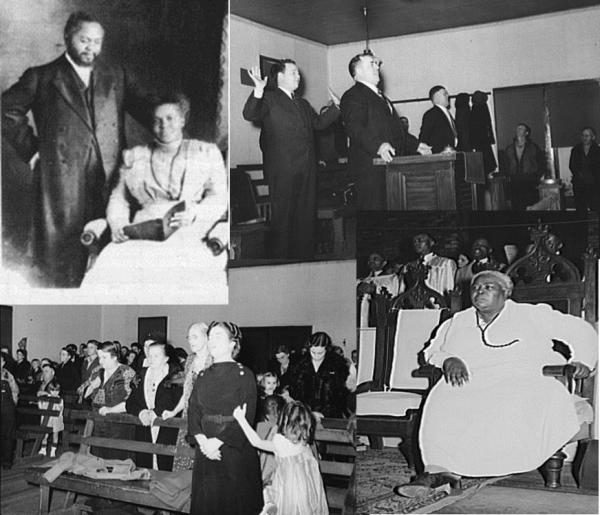A Charismatic Looks at the Birth of Pentecostalism
 The grace that Pentecostalism brought to Christendom was to make the use of tongues and the other gifts described by Paul in I Cor. 12 and 14 normal in the life of ordinary Christians.[1] This was something not seen since Apostolic times. Before we examine how tongues came to be normal (or at least well known) we need to look at an almost forgotten revival to learn a negative lesson. That is, what happens when the Spirit gives His gifts but there is no theology to receive the experience?
The grace that Pentecostalism brought to Christendom was to make the use of tongues and the other gifts described by Paul in I Cor. 12 and 14 normal in the life of ordinary Christians.[1] This was something not seen since Apostolic times. Before we examine how tongues came to be normal (or at least well known) we need to look at an almost forgotten revival to learn a negative lesson. That is, what happens when the Spirit gives His gifts but there is no theology to receive the experience?
The Cherokee County Revival
The revival in question took place in Cherokee County, North Carolina.[2] This county is part of the Unicoi mountain region bordering North Carolina, Tennessee and Georgia. It occurred during the summer of 1896.
Ten years earlier a tiny eight member church formed called the “Christian Union” by the Rev. R.R. Spurling. The founder’s rather grandiose intentions were to restore the church to the holiness of “primitive Christianity,” avoid divisive creeds, and ultimately unite all the churches – thus its name. Spurling died shortly after the church’s launch, but not before he ordained his son, R.G. Spurling, Jr., to carry on his vision of the new church.
The Christian Union grew slowly, and in 1892 a second congregation formed. Two other preachers joined the denomination, one was a Methodist preacher, William Martin, and the other F. W. Bryant, a Baptist. By then, all three had experienced a Wesleyan-like “second blessing” of sanctification in their lives and were influenced by Holiness doctrines.
Under the leadership of these ministers, a series of local revivals took place in the homes, barns and meeting houses of the Unicoi mountain region. This intensified in the summer of 1896 when the three ministers began a revival in the Shearer schoolhouse in Cherokee County, a humble, one-room frame building. They preached the Methodist-Holiness message of sanctification and soon return of Jesus. A. J. Tomilinson, writing about the revival fifteen years later, recounts:
…the Holy Ghost began to fall on the honest, humble, sincere seekers of God. While the meetings were in progress one after the other fell under the power of God, and soon quite a number were speaking in tongues as the Spirit gave them utterance. The influence and excitement then spread like wildfire, and people came for many miles to investigate, hear and see the manifestations of the presence of God.[3]
The tongues surprised the ministers, who “sought the scriptures.” They correctly identified the phenomenon with Acts 2:4, 10:46 and 19:6 and felt very blessed by the experience. The revival, including tongues, lasted all summer, but faded by the fall. The ministers and congregation thanked God for the season of revival and the tongues, and prayed that all of the Churches would be similarly blessed.
The Rev. Spurling, Jr. and the others who led the revival had no theology, accurate or inaccurate, to understand that what had happened was a universally important and a repeatable gift. They did not make a “big deal” of the tongues. A decade later, when the Azusa Street revival received national publicity, the churches of the Christian Union accepted the theology developed by Charles Parham and joined the budding Pentecostal movement. Ultimately, the Christian Union changed its name and grew to become the Church of God (Tennessee), now one of the biggest Pentecostal denominations of the world.
One other pre-Pentecostal revival needs to be mentioned, a revival that took place among several Holiness congregations in Corsicana County, Texas, in the 1870s. This revival began with a burst of worship and enthusiasm which included tongues and, significantly, an understanding that the gifts of the Spirit described in 1 Cor. 12 were for the present. Unfortunately, like many revivals before, the leaders drifted into false prophecy, which included the idea that a person baptized with the Spirit would be regenerated physically to the point of being able to live a thousand years. The revival disintegrated further as local prophets urged their followers to sell all and await Jesus’ return in 1875. Jesus didn’t make it, and the only thing achieved by the revival was the discrediting of future Pentecostal efforts in the area.[4]
Category: Church History, Fall 2014


